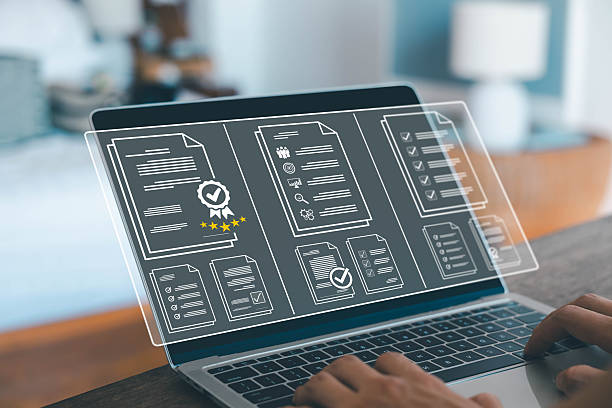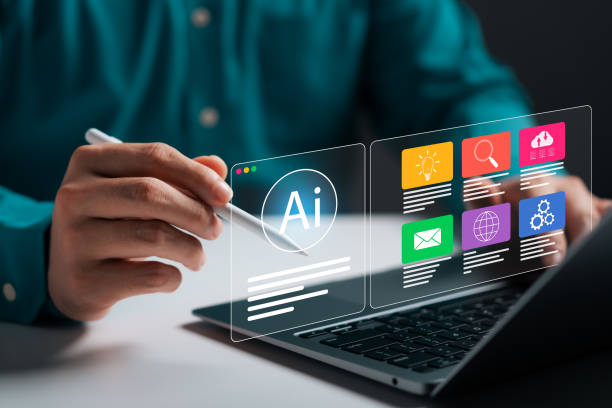Understanding the Fundamentals of On-Page SEO and Its Importance
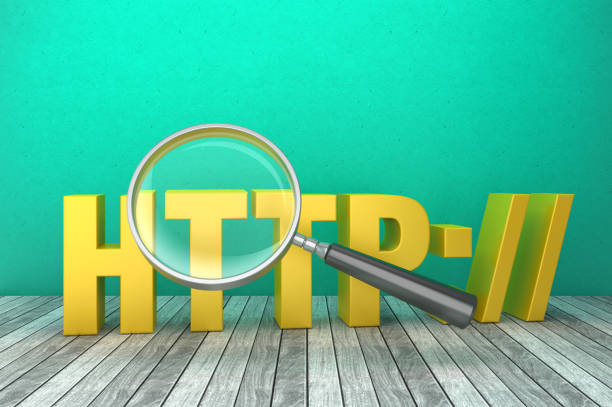
In today’s highly competitive web world, an online presence is not achieved merely by having a website; rather, to be seen and attract target audiences, we need targeted optimizations.
#On_Page_SEO is one of the most vital pillars of these optimizations, directly related to the content and structure within your website.
This part of On-Page SEO includes all actions you can take on your website pages to achieve a better ranking in search engine results.
This topic is educational and explanatory, helping you understand the importance of this field.
Have you ever wondered why some websites rank higher than others in search results? The answer often lies in the precise and principled implementation of On-Page SEO.
These optimizations include optimizing titles, meta descriptions, headings, content, images, and even the internal link structure of your site.
The ultimate goal of On-Page SEO is for search engines to understand your content as best as possible and determine which pages are most relevant and high-quality for user queries.
Without a strong strategy in On-Page SEO, even with the best content, your website might never reach its full potential and get lost in the endless sea of internet information.
Therefore, understanding and correctly implementing these principles is an unavoidable necessity for anyone seeking online success.
Worried about losing customers because you don’t have a professional e-commerce website?
With e-commerce website design by Rasavvab, forget these worries!
✅ Significant increase in sales and visitor-to-customer conversion rates
✅ Professional and user-friendly design that builds customer trust
⚡ Get free consultation from Rasavvab
Keywords: The Cornerstone of Every Successful On-Page SEO
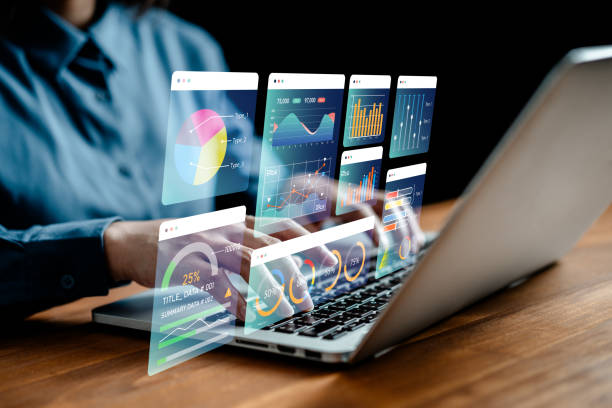
The correct selection and application of keywords are the backbone of every successful On-Page SEO strategy.
#Keyword_Research is the first and perhaps the most important step you should take on this path.
This expert guide shows you how to find the words and phrases your target users actually type into search engines.
Using long-tail keywords, which consist of three or more words, can drive more targeted traffic to your website, as these phrases usually have a more specific search intent.
For example, instead of focusing solely on “shoes,” using “buy cheap men’s sports shoes” can yield better results.
After identifying suitable keywords, the next step is to intelligently integrate them into your content.
This doesn’t mean unnaturally stuffing your text with keywords, but rather placing them naturally and smoothly in titles, subheadings, paragraphs, and even image alt text.
Search engines are becoming increasingly intelligent and can detect low-quality, keyword-stuffed texts.
Therefore, the priority should always be to produce valuable and useful content for the user that naturally incorporates relevant keywords.
Understanding the user’s search intent behind each keyword is the key to your success in On-Page SEO and content optimization.
Content Optimization: A Crucial Element of On-Page SEO

Content is king, and optimizing it within the framework of On-Page SEO ensures its coronation.
#Valuable_Content and #Relevance are two main pillars in this stage.
This is an expert training that helps you make your content equally appealing and understandable for users and search engines.
This process includes optimizing headings (from H1 to H6) which help search engines understand the structure and hierarchy of page information.
H1 should include the main keyword and be used uniquely on each page.
Also, keyword density should be natural, and keyword stuffing should be avoided.
On-site optimization goes beyond just keywords; using synonyms and Latent Semantic Indexing (LSI) Keywords shows search engines that your content is comprehensive and in-depth.
Content length is also important; longer and more comprehensive content usually ranks better, provided it is high-quality and valuable.
Using relevant internal links to other pages on your website, in addition to increasing page authority, helps users with navigation and increases their time on site.
Producing comprehensive, accurate, and useful content that answers user questions is not only beneficial for your On-Page SEO but also significantly improves user experience.
| Element | Explanation | Importance in On-Page SEO |
|---|---|---|
| Title (H1) | The main heading of the page; should contain the main keyword. | Highest SEO weight, indicating the main topic of the page to the search engine. |
| Subheadings (H2-H6) | Dividing content into smaller, readable sections. | Improves readability, helps the search engine understand content structure. |
| Keyword Density | Percentage of keyword repetition in the text. | Should be natural; avoid Keyword Stuffing. |
| Internal Links | Linking from one page to another within the same website. | Increases page authority, improves user navigation, reduces Bounce Rate. |
Site Structure and Navigation: Foundations for User Experience and On-Page SEO
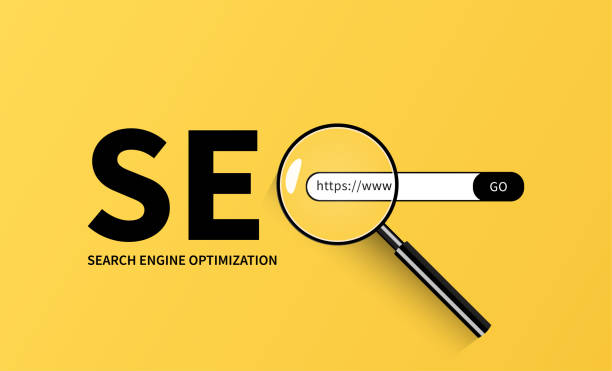
Your website’s structure not only shapes the user experience but also plays a vital role in On-Page SEO.
#Logical_Site_Architecture and #Easy_Navigation are two fundamental factors that help search engine crawlers easily find, index, and understand the value of your pages.
This section is a kind of analytical guide on how to design an optimal site structure.
A hierarchical and logical site structure that starts from the homepage and branches out to categories, subcategories, and finally product or article pages is ideal for on-site optimization.
Using “Breadcrumbs” not only helps users find their way around the site but also sends a strong signal to search engines about your page structure.
Internal Links not only help users discover more content but also help distribute “Link Juice” or authority among different pages of your site.
This is a key component in On-Page SEO that transfers the power of higher-ranking pages to lower-ranking pages.
Ensuring that there are no orphan pages (a page with no internal links pointing to it) on the site is very important.
Every page should have at least one internal link from another page so that crawlers can find it.
A strong site structure is the foundation for powerful On-Page SEO.
Do you dream of a thriving online store but don’t know where to start?
Rasavvab is your comprehensive e-commerce website design solution.
✅ Attractive and user-friendly design
✅ Increased sales and revenue⚡ Get free consultation
Loading Speed and Responsiveness in On-Page SEO

In the current era, website loading speed and responsiveness are two decisive factors in the success of On-Page SEO and user experience.
#Site_Speed and #Mobile_Friendliness are no longer just advantages, but necessities for staying competitive.
This section provides a technical explanation on the importance of Core Web Vitals and mobile optimization.
Search engines like Google consider page loading speed as an important ranking factor.
Core Web Vitals, which include Largest Contentful Paint (LCP), First Input Delay (FID), and Cumulative Layout Shift (CLS), are metrics for measuring user experience based on page loading speed, interactivity, and visual stability.
Optimizing images (compression and using modern formats), caching, optimizing codes (CSS, JavaScript, HTML), using a Content Delivery Network (CDN), and choosing powerful hosting can all help increase your website’s speed.
On the other hand, given the significant increase in mobile users, responsiveness and responsive design have become essential in On-Page SEO.
Your website should display well on all devices, from desktops to tablets and mobiles, providing a seamless user experience.
This not only affects your On-Page SEO ranking but also reduces the bounce rate and improves the conversion rate.
Therefore, investing in improving website speed and responsiveness is an investment in your online future.
Meta Tags and Schema Markup in On-Page SEO

Beyond visual and textual content, meta tags and schema markups are hidden layers of information that help search engines better understand your content and play a key role in On-Page SEO.
#Meta_Tags and #Schema_Markups are powerful tools for increasing visibility in search results.
This is an expert training on how to implement these elements.
The Meta Title is the first thing users see in search results and should include the main keyword and be engaging to increase the click-through rate (CTR).
The Meta Description, although not directly a ranking factor, encourages users to click by providing an appealing summary of the content.
Appropriate length for both meta tags is important.
Schema Markup, also known as structured data, is additional code added to your website to help search engines better understand the type of content on the page (such as recipes, product reviews, events, organizations).
This data allows search engines to display Rich Snippets or enhanced results in the SERP (Search Engine Results Pages), which can include star ratings, prices, product availability, and more.
Displaying Rich Snippets significantly increases the click-through rate, even if your ranking doesn’t change.
Correct use of schema in On-Page SEO helps search engines place your content in the appropriate context and display it to relevant users.
This is considered a significant competitive advantage in On-Page SEO.
Images and Videos: Hidden Opportunities in On-Page SEO

While text is the backbone of content, images and videos can enrich the user experience and provide hidden opportunities for On-Page SEO.
#Image_Optimization and #Video_SEO are often overlooked but have great potential for attracting traffic.
This is an analytical guide for maximizing the use of visual content.
For images, using appropriate “Alt Text” that includes a relevant keyword not only helps search engines understand the image content but is also beneficial for visually impaired users.
Also, compressing images to reduce file size without losing quality, and using modern formats like WebP, can significantly help page loading speed, which is itself an important factor in On-Page SEO.
Naming image files with descriptive keywords is also beneficial.
For videos, creating a Video Sitemap and optimizing video titles, descriptions, and tags on platforms like YouTube or on your own website can help them rank in video search results and even web search results.
Adding transcripts or captions to videos also helps search engines understand spoken content.
Intelligent use of multimedia content not only enhances the site’s visual appeal but also helps improve your On-Page SEO by increasing user dwell time and reducing the bounce rate.
By optimizing these elements, you have taken a big step in improving your On-Page SEO.
| Element | Images | Videos |
|---|---|---|
| Alt Text | Use relevant and descriptive keywords. | Textual content (transcripts, captions) for embedded videos. |
| File Size | Compression for faster loading. | Use optimal formats and appropriate compression. |
| File Format | Use WebP, JPEG for images. | MP4, WebM for video. |
| File Name | Descriptive naming including keywords. | Video file name should be relevant. |
| Hosting | Host images on CDN or fast servers. | Host or Embed from powerful platforms (e.g., YouTube). |
The Role of UX and UI in Advanced On-Page SEO
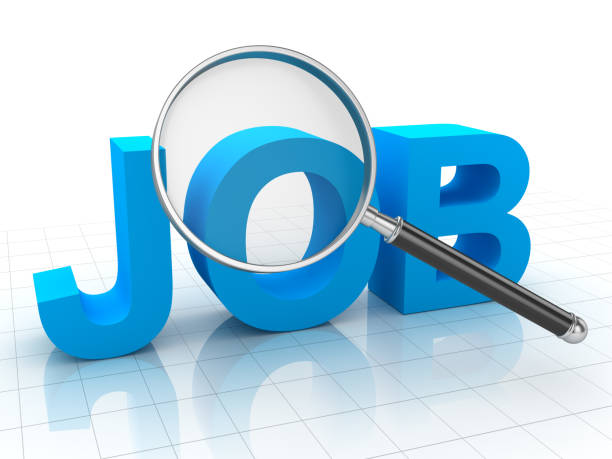
User Interface (UI) and User Experience (UX) are not only important for your visitors but also have an indirect yet powerful impact on your On-Page SEO and site ranking.
#User_Experience and #User_Interface are no longer just aesthetic considerations but vital factors for online success.
This section analytically and entertainingly examines this connection.
If users get confused as soon as they land on your site, they will quickly leave (increasing bounce rate).
This sends a negative signal to search engines that your content is not sufficiently relevant or engaging, which can lower your On-Page SEO ranking.
An attractive and visually pleasing UI design, coupled with intuitive navigation and smooth UX, can increase user dwell time on the site and boost the number of pages per session.
When users enjoy interacting with your website, they are more likely to return and share your content on social media.
All these positive signals, though not direct ranking factors, indicate to search engines that your website is a credible and valuable resource.
Therefore, investing in designing an attractive user interface and a seamless user experience is an integral part of your advanced On-Page SEO strategy.
Remember, the ultimate goal of search engines is to provide the best experience to their users, so by improving your site’s UX/UI, you help them achieve this goal.
Does your current corporate website present a worthy image of your brand and attract new customers?
If not, turn this challenge into an opportunity with Rasavvab’s professional corporate website design services.
✅ Significantly improves your brand’s credibility and image.
✅ Paves the way for attracting new leads and customers.
⚡ For free and expert consultation, contact Rasavvab now!
Common On-Page SEO Errors and How to Fix Them

Even the most experienced On-Page SEO specialists can make mistakes.
Identifying and correcting these errors is crucial for maintaining your site’s ranking.
#SEO_Errors and #Technical_Troubleshooting are among the issues that must be continuously monitored.
This section provides thought-provoking and yet informative content about the most common mistakes and their solutions.
One of the most common errors is duplicate content, which can appear in different versions of a page or across multiple URLs, confusing search engines.
Using a Canonical Tag or 301 redirects is essential to resolve this issue.
Thin content, or content that offers little value to the user, can also harm your ranking.
The solution is to enrich your content and add more useful information.
Broken links disrupt user experience and send a negative signal to search engines; using link-checking tools to identify and fix them is crucial.
Also, neglecting site speed or mobile unresponsiveness, as previously mentioned, are major errors in on-site optimization.
Sometimes, mistakenly blocking search engine bots with a robots.txt file can also prevent your important pages from being indexed.
Regular monitoring with tools like Google Search Console and Google Analytics helps you identify these errors in time and take action to improve your website’s On-Page SEO.
By learning from these common mistakes, you can outperform your competitors.
Continuous Monitoring and Updating of On-Page SEO for Sustained Top Ranking
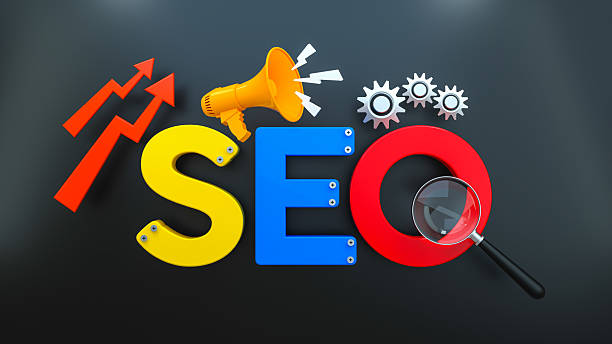
On-Page SEO is not a one-time process, but rather an ongoing and continuous effort.
#Continuous_Monitoring and #Algorithm_Updates are essential for maintaining your position and growing your ranking in search results.
This expert guide shows you how to always stay on top.
Search engine algorithms are constantly changing, and what works today might not be effective tomorrow.
Therefore, continuously updating your On-Page SEO knowledge and strategy is of great importance.
Using analytical tools like Google Analytics and Google Search Console is essential for monitoring your website’s performance.
These tools provide vital information about traffic, keywords, bounce rate, popular pages, and potential errors.
Monitoring your keyword rankings and analyzing competitor performance can also help identify opportunities and weaknesses.
Periodically reviewing content to ensure its freshness and relevance to current user needs, as well as updating keywords and On-Page optimizations, is an inseparable part of sustainable On-Page SEO.
Remember that the ultimate goal of On-Page SEO is to provide the best and most relevant content to users.
By focusing on this goal and continuously monitoring website performance, you can ensure that your website not only ranks well currently but is also prepared for future challenges and is recognized as a valuable resource in its field.
This proactive approach guarantees your long-term success in the online space.
Frequently Asked Questions
| Question | Answer |
|---|---|
| What is On-Page SEO? | On-Page SEO refers to a set of measures taken within your website to improve its ranking in search engine results. This includes optimizing content, site structure, and HTML code. |
| Why is On-Page SEO important? | On-Page SEO helps search engines understand your page’s content and determine whether your content is relevant to searchers. It is the foundation of any successful SEO strategy. |
| What are the key elements of On-Page SEO? | Page title (Title Tag), meta description, keyword usage, image optimization, heading structure (H1, H2, …), internal linking, and content quality are key elements. |
| How to optimize the page title (Title Tag)? | The page title should include the main keyword, be engaging and encouraging for clicks, and be between 50 to 60 characters (or appropriate pixels) in length to be fully displayed in search results. |
| What role does the Meta Description play in On-Page SEO? | The meta description is a summary of the page content displayed below the title in search results. Although it does not directly affect ranking, it helps SEO by increasing the click-through rate (CTR). |
| What is the importance of using heading structure (H1, H2, H3) in On-Page SEO? | Headings structure the page content and make it easier to read. H1 is usually the main title of the page and should include the keyword. H2 and H3 are used to organize subsections and help search engines understand the content hierarchy. |
| How to effectively use keywords in content? | Keywords should be used naturally and logically throughout the content, including the introduction, body, and conclusion. Avoid keyword stuffing. |
| What steps are involved in optimizing images for On-Page SEO? | It includes compressing images to reduce size, using descriptive file names, adding appropriate Alt Text, and optimizing the image title and description. Alt Text is crucial for accessibility and helping search engines understand image content. |
| What is Internal Linking and what are its benefits? | Internal linking means creating links from one page on your website to another page on the same website. This helps users navigate your site easily, distributes page authority across the site, and helps search engines better understand your site’s structure. |
| What is the importance of content quality in On-Page SEO? | High-quality, accurate, comprehensive, and valuable content for users is the cornerstone of On-Page SEO. Search engines prefer content that meets user needs. Quality content leads to longer dwell time and reduced bounce rate, which are positive SEO signals. |
And other services of Rasavvab Advertising Agency in the field of advertising
Smart Website Development: A novel service to increase customer acquisition through marketing automation.
Smart Marketplace: A professional solution for digital branding with a focus on intelligent data analysis.
Smart Advertising Campaign: Designed for businesses seeking to improve SEO ranking through intelligent data analysis.
Smart Social Media: A specialized service for sales growth based on precise audience targeting.
Smart Data Analysis: A professional solution for digital branding with a focus on intelligent data analysis.
And over hundreds of other services in the field of internet advertising, advertising consultation, and organizational solutions
Internet Advertising | Advertising Strategy | Advertorial
Sources
Complete Guide to On-Page SEO, On-Page SEO Checklist, Comprehensive SEO Guide, What is SEO?
? Are you ready to transform your business in the digital world? At Rasavvab Afarin Digital Marketing Agency, with our expertise in user-friendly website design and comprehensive digital strategy implementation, we help you establish a powerful and effective online presence. From SEO and online advertising to social media management, we are your digital partner for achieving your goals.
📍 Tehran, Mirdamad Street, next to Bank Markazi, Kazerun Jonoubi Alley, Ramin Alley No. 6

